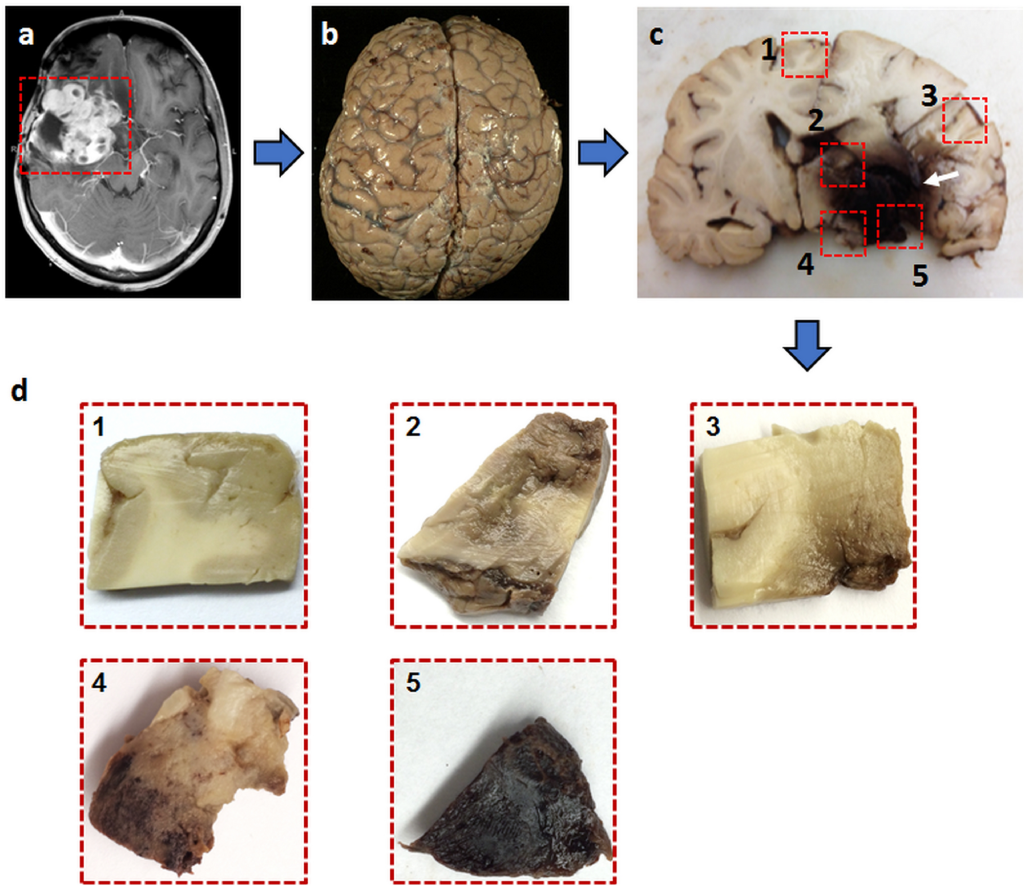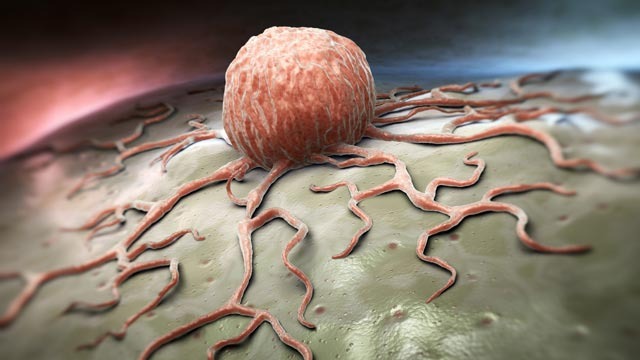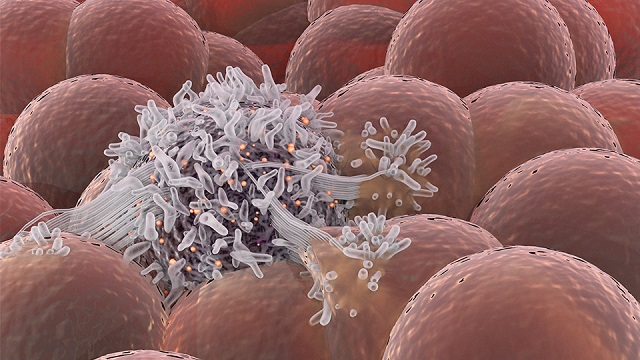Brain Tumor
A brain tumor is a mass or growth of abnormal cells in your brain.
Many different types of brain tumors exist. Some brain tumors are noncancerous (benign), and some brain tumors are cancerous (malignant). Brain tumors can begin in your brain (primary brain tumors), or cancer can begin in other parts of your body and spread to your brain as secondary (metastatic) brain tumors.
How quickly a brain tumor grows can vary greatly. The growth rate as well as the location of a brain tumor determines how it will affect the function of your nervous system.
Symptoms
The signs and symptoms of a brain tumor vary greatly and depend on the brain tumor’s size, location and rate of growth.
General signs and symptoms caused by brain tumors may include:
- New onset or change in pattern of headaches
- Headaches that gradually become more frequent and more severe
- Unexplained nausea or vomiting
- Vision problems, such as blurred vision, double vision or loss of peripheral vision
- Gradual loss of sensation or movement in an arm or a leg
- Difficulty with balance
- Speech difficulties
- Feeling very tired
- Confusion in everyday matters
- Difficulty making decisions
- Inability to follow simple commands
- Personality or behavior changes
- Seizures, especially in someone who doesn’t have a history of seizures
- Hearing problems
Causes
brain tumor that begin in the brain
Primary brain tumor originate in the brain itself or in tissues close to it, such as in the brain-covering membranes (meninges), cranial nerves, pituitary gland or pineal gland.
Primary brain tumor begin when normal cells develop changes (mutations) in their DNA. A cell’s DNA contains the instructions that tell a cell what to do. The mutations tell the cells to grow and divide rapidly and to continue living when healthy cells would die. The result is a mass of abnormal cells, which forms a tumor.
In adults, primary brain tumor are much less common than are secondary brain tumor, in which cancer begins elsewhere and spreads to the brain.
Many different types of primary brain tumors exist. Each gets its name from the type of cells involved. Examples include:
- Gliomas. These tumors begin in the brain or spinal cord and include astrocytomas, ependymomas, glioblastomas, oligoastrocytomas and oligodendrogliomas.
- Meningiomas. A meningioma is a tumor that arises from the membranes that surround your brain and spinal cord (meninges). Most meningiomas are noncancerous.
- Acoustic neuromas (schwannomas). These are benign tumors that develop on the nerves that control balance and hearing leading from your inner ear to your brain.
- Pituitary adenomas. These are tumors that develop in the pituitary gland at the base of the brain. These tumors can affect the pituitary hormones with effects throughout the body.
- Medulloblastomas. These cancerous brain tumor are most common in children, though they can occur at any age. A medulloblastoma starts in the lower back part of the brain and tends to spread through the spinal fluid.
- Germ cell tumors. Germ cell tumors may develop during childhood where the testicles or ovaries will form. But sometimes germ cell tumors affect other parts of the body, such as the brain.
- Craniopharyngiomas. These rare tumors start near the brain’s pituitary gland, which secretes hormones that control many body functions. As the craniopharyngioma slowly grows, it can affect the pituitary gland and other structures near the brain.
People with a brain tumor may experience the following symptoms or signs. Sometimes, people with a brain tumor do not have any of these changes. Or, the cause of a symptom may be a different medical condition that is not a brain tumor.
Symptoms of a brain tumor can be general or specific. A general symptom is caused by the pressure of the tumor on the brain or spinal cord. Specific symptoms are caused when a specific part of the brain is not working well because of the tumor. For many people with a brain tumor, they were diagnosed when they went to the doctor after experiencing a problem, such as a headache or other changes.
General symptoms include:
Headaches, which may be severe and worsen with activity or in the early morning
Seizures. People may experience different types of seizures. Certain drugs can help prevent or control them. Motor seizures, also called convulsions, are sudden involuntary movements of a person’s muscles. The different types of seizures and what they look like are listed below:
Myoclonic
Single or multiple muscle twitches, jerks, spasms
Tonic-Clonic (Grand Mal)
Loss of consciousness and body tone, followed by twitching and relaxing muscles that are called contractions
Loss of control of body functions, such as loss of bladder control
May be a short 30-second period of no breathing and a person’s skin may turn a shade of blue, purple, gray, white, or green
After this type of seizure, a person may be sleepy and experience a headache, confusion, weakness, numbness, and sore muscles.
Sensory
Change in sensation, vision, smell, and/or hearing without losing consciousness
Complex partial
May cause a loss of awareness or a partial or total loss of consciousness
May be associated with repetitive, unintentional movements, such as twitching
Personality or memory changes
Nausea or vomiting
Fatigue
Drowsiness
Sleep problems
Memory problems
Changes in ability to walk or perform daily activities
Symptoms that may be specific to the location of the tumor include:
Pressure or headache near the tumor
Loss of balance and difficulty with fine motor skills is linked with a tumor in the cerebellum.
Changes in judgment, including loss of initiative, sluggishness, and muscle weakness or paralysis is associated with a tumor in the frontal lobe of the cerebrum.
Partial or complete loss of vision is caused by a tumor in the occipital lobe or temporal lobe of the cerebrum.
Changes in speech, hearing, memory, or emotional state, such as aggressiveness and problems understanding or retrieving words can develop from a tumor in the frontal and temporal lobe of the cerebrum.
Altered perception of touch or pressure, arm or leg weakness on 1 side of the body, or confusion with left and right sides of the body are linked to a tumor in the frontal or parietal lobe of the cerebrum.
Inability to look upward can be caused by a pineal gland tumor.
Lactation, which is the secretion of breast milk, and altered menstrual periods in women, and growth in hands and feet in adults are linked with a pituitary tumor.
Difficulty swallowing, facial weakness or numbness, or double vision is a symptom of a tumor in the brain stem.
Vision changes, including loss of part of the vision or double vision can be from a tumor in the temporal lobe, occipital lobe, or brain stem.
If you are concerned about any changes you experience, please talk with doctor. doctor will ask how long and how often you’ve been experiencing the symptom(s), in addition to other questions. This is to help figure out the cause of the problem, called a diagnosis.
If a brain tumor is diagnosed, relieving symptoms remains an important part of your care and treatment. This may be called palliative care or supportive care. It is often started soon after diagnosis and continued throughout treatment. Be sure to talk with your health care team about the symptoms you experience, including any new symptoms or a change in symptoms. Learn more about managing symptoms of a brain tumor in the Types of Treatment section.




